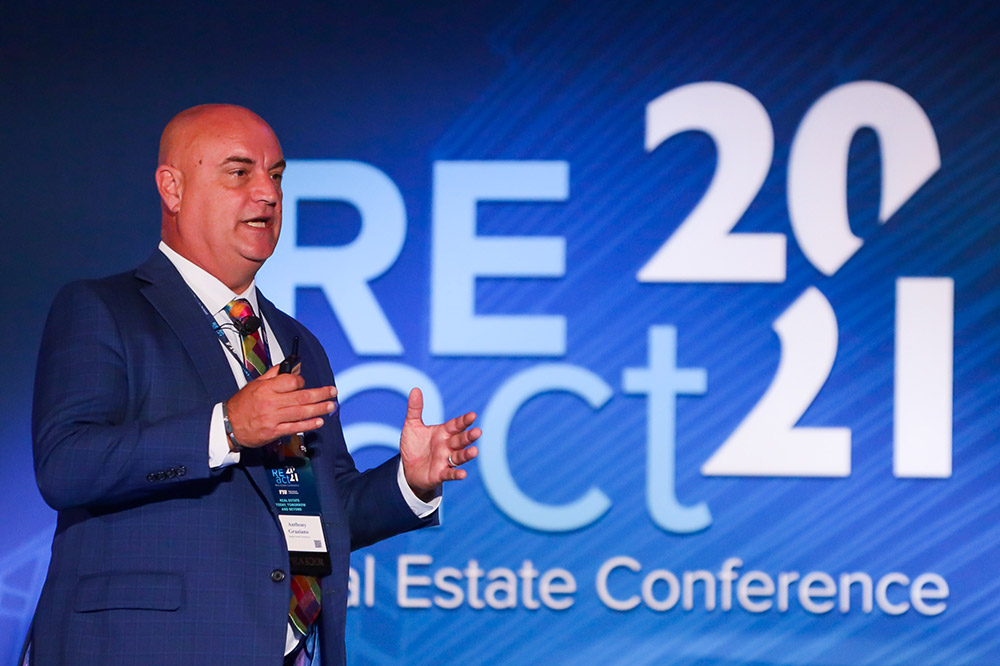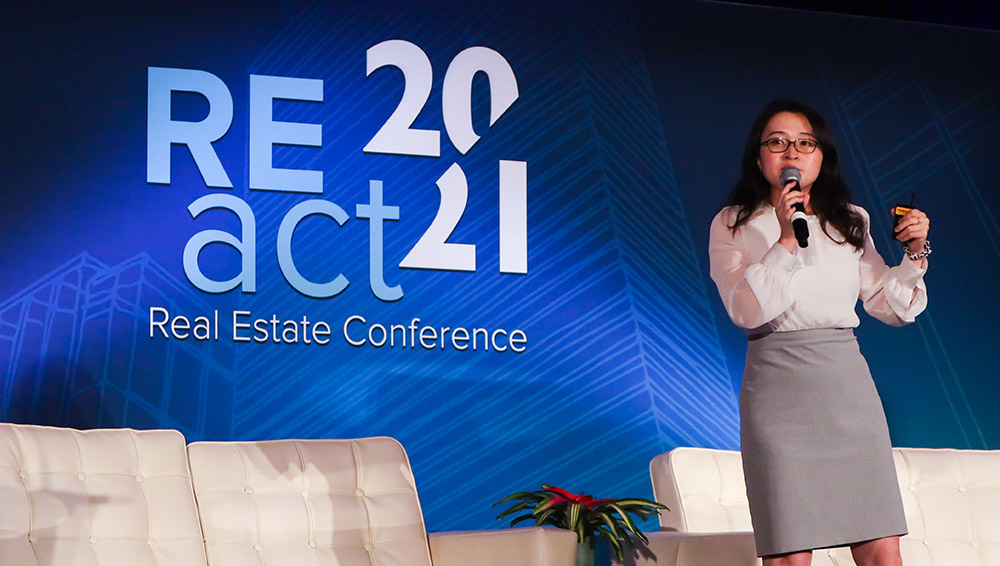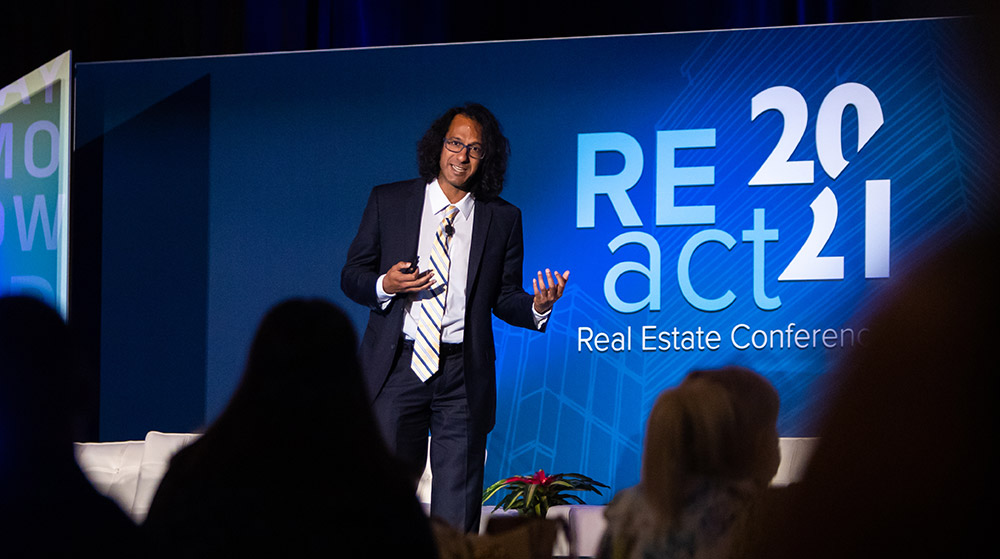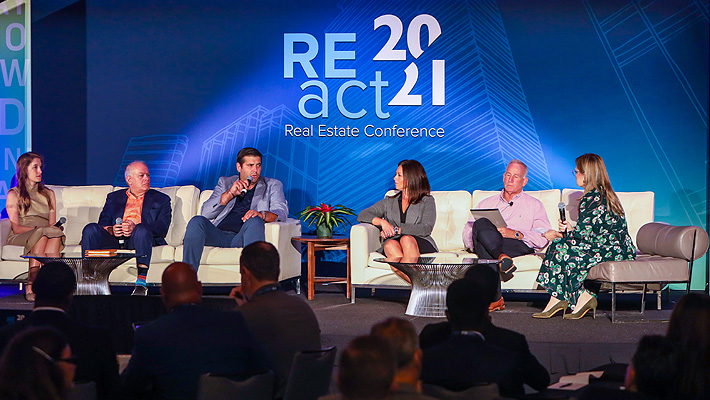
Newcomers have descended on South Florida, snapping up housing and commercial space at unprecedented speed. The build-to-rent market is on fire. Inventory is low, and land prices are sky high.
Yet within these “good times,” challenges remain for the real estate industry. Can affordable housing for workers be built in a market as pricey as Miami? What will happen to millions of square feet of mall space that lie vacant?
The Hollo School of Real Estate at FIU Business brought together a crowd of over 200 professionals to explore these challenges and opportunities and explore what lies ahead. Its inaugural real estate conference, “Real Estate: Today, Tomorrow and Beyond,” was held October 8, 2021 at the InterContinental Miami hotel.
“Real estate is Miami, and Miami is FIU,” said Eli Beracha, professor and director of the Hollo School of Real Estate as he opened the REact 2021 conference.
Amidst ample networking opportunities, the audience learned that even in today’s hot South Florida real estate market, challenges of housing affordability and land cost remain on the horizon.

Keynote speaker Anthony M. Graziano, CEO of Integra Realty Resources, noted that while technology advancements and the growth of real estate as a publicly-traded investment category have impacted the market, the biggest factors driving today’s environment are the influx of federal stimulus spending, and a boom that’s unique to South Florida.
“It’s what I call the X Factor,” Graziano said. “[Miami Mayor] Francis Suarez has put himself on a national stage, creating a revolution of people talking about Miami as if we’re San Francisco.” The luxury housing market has exploded, not only in Miami, but in Palm Beach and parts of Broward County, he added.
Yet not everything has flourished, Graziano said. Hotels could take another 24-48 months to return to normal, and malls are lagging even further – but neighborhood retail is picking up, he said.

Glenn Rufrano (MS ‘74), CEO of VEREIT, a NYSE-traded real estate investment trust, spoke to the conference from New York. With millions of square feet of retail space in VEREIT’s portfolio, Rufrano noted a decidedly mixed outlook for malls. “The definition of ‘dying’ is not easy,” he said, sharing estimates that the 800 to 1,000 U.S. malls today would shrink to around 400 malls in 10-20 years. Prime Class A malls, with good locations and strong tenant mixes, will continue to do well, he said, with others taking on mixed offerings, including housing, healthcare centers, or closing completely.
One session featured a “flash talk” where four FIU Business real estate professors discussed their research in the field. At another session, panelists noted the importance of in-person contact, and in-office presence, to a successful real estate career.
“A new generation is getting into our field,” said Maria Juncadella, managing principal, Fairchild Partners. “Those of us who achieved a certain level have our clients’ trust, we are depending on that trust more than ever due to the nature of technology.”
Participants also learned about the technology transforming the business, including several companies bringing AI tools to land use and zoning analysis and customized information to the sales and bidding process.

Lorenzo Perez, president of Premier International Properties, moderated a panel that discussed the technology and innovation that are reshaping the industry.
“There are some macro forces that are occurring right now that are going to impact real estate prices in the long term,” noted Perez.
The ability to explore these issues in a conference setting was a big plus for attendees. William Hardin, founding director of the Hollo School who now serves as interim dean of FIU Business, noted the importance of getting back into real estate as part of the “new normal” – and stressed the need to create an environment befitting the global city that Miami has become.
“Let’s create the best built environment we can have and make it accessible for everyone,” Hardin said, “and let’s have fun doing it.”





